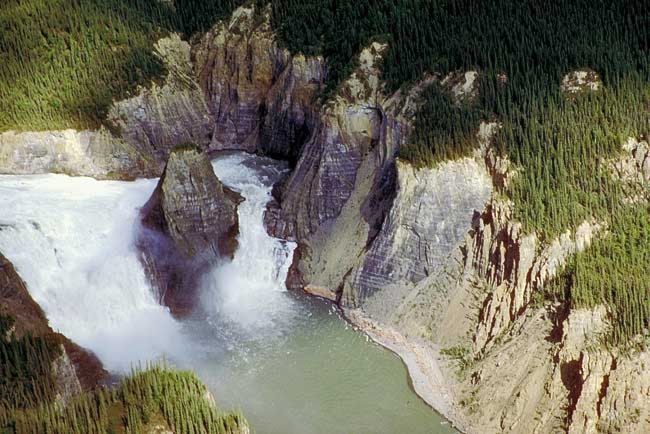Selwyn Resources and the Yukon government have employed the same lobbyist to protect a mining access road that crosses the proposed expansion of the Nahanni National Park Reserve.
The Nahanni Range Road starts 100 kilometres north of Watson Lake. There, a right turn will take you to Selwyn’s claims, which stake out one of the world’s largest estimated lead-zinc ore deposits.
The 160-kilometre-long road takes several hours to drive, beginning along the Robert Campbell Highway and ending in Howard’s Pass, one of the busiest Yukon exploration regions in recent years.
But for a brief while, you’ll be rolling through the Northwest Territories. And almost two years ago, Prime Minister Stephen Harper announced this area would become part of an expanded Nahanni National Park Reserve.
Fearing that Nahanni National Park expansion would block access to the lead-zinc deposit, the Yukon government began working the phones.
“We needed to try and ensure that our interests in the road were met,” said Greg Komaromi, assistant deputy minister. “I don’t know the outcome of that yet, we’re all waiting to see what will happen with the Nahanni Park expansion.”
That expansion hasn’t been a quick process—it required land withdrawals from the Sahtu and Dehcho First Nations in the NWT.
The incremental planning didn’t slow Selwyn Resources, the junior exploration firm that owns the mineral rights to mine the Howard’s Pass deposit. It also rushed to be involved.
“We’ve got our road and we’ve got our licences and we still do obviously want to be in the loop,” said Justin Himmelright, vice-president of environment and community affairs at Selwyn. “We feel like an affected user in that area and that we should be part of that process.
“But we have yet to hear from Parks Canada.”
The environmental assessment and water licences for the Howard’s Pass road, which heads north after reaching Tungsten, Northwest Territories, were done in the 1970s.
It took Selwyn three years to have those permits recognized again.
“The whole process of having those rights (the licences) recognized was an extensive and painful process,” said Himmelright.
The decisions were being made in Ottawa. So the Yukon Department of Energy, Mines and Resources hired retired federal deputy minister Bruce Rawson, who now works as a consultant, to keep tabs on the Nahanni expansion.
“We don’t use him for lobbying per se, but to track issues for us and provide advice” said Komaromi.
Rawson is contracted by the Yukon government a year at a time, but is only paid for the specific amount of time he puts into a project.
Rawson was paid $5,000 in 2008 for help with “strategic advice and federal government relations,” says the Yukon’s contract registry.
His contract to work on the Nahanni expansion for the Yukon government is listed on the federal Lobbyist’s Registry, and it began in September 2007.
“Lobbyist is not really a good way to describe the work that Bruce does for us,” said Komaromi. “When people think of lobbying, I think they have images of the martini crowd from Hill & Knowlton,” he said.
Selwyn also hired Rawson to do work on the Nahanni road-access issue, beginning in February 2008.
SDLqBruce was very helpful in Ottawa,” said Himmelright.
Neither Komaromi nor Himmelright felt comfortable suggesting that Rawson lobbied for them.
“Bruce’s role was more by way of identifying for us who it was we needed to talk to and arranging for meetings to take place,” said Himmelright.
Rawson states in the Lobbyist Registry that his “role is to assist Selwyn to advocate protection of its pre-existing rights and to achieve a fair adjustment to the park area.”
Rawson worked for 30 years as a deputy minister in the department of Fisheries and Oceans and Indian and Northern Affairs, among others.
“We don’t have to ask him to lobby on our behalf; he’s just a walking, talking encyclopedia,” said Komaromi.
Rawson helped the Yukon work out meetings with different players involved in the Nahanni expansion, including the departments of Indian and Northern Affairs, Natural Resources and Parks Canada.
The park expansion has been a dream of wilderness lovers for decades. The current park, which is technically just a reserve, has been around since 1972, and was a favourite stomping ground of Pierre Trudeau.
The current park is a 4,700-square-kilometre area surrounding a section of the South Nahanni River, but its whole watershed is over eight times that size.
Harper declared an expansion covering the whole watershed in August 2007.
Parks Canada did not return calls before press time.
Contact James Munson at
jamesm@yukon-news.com.
